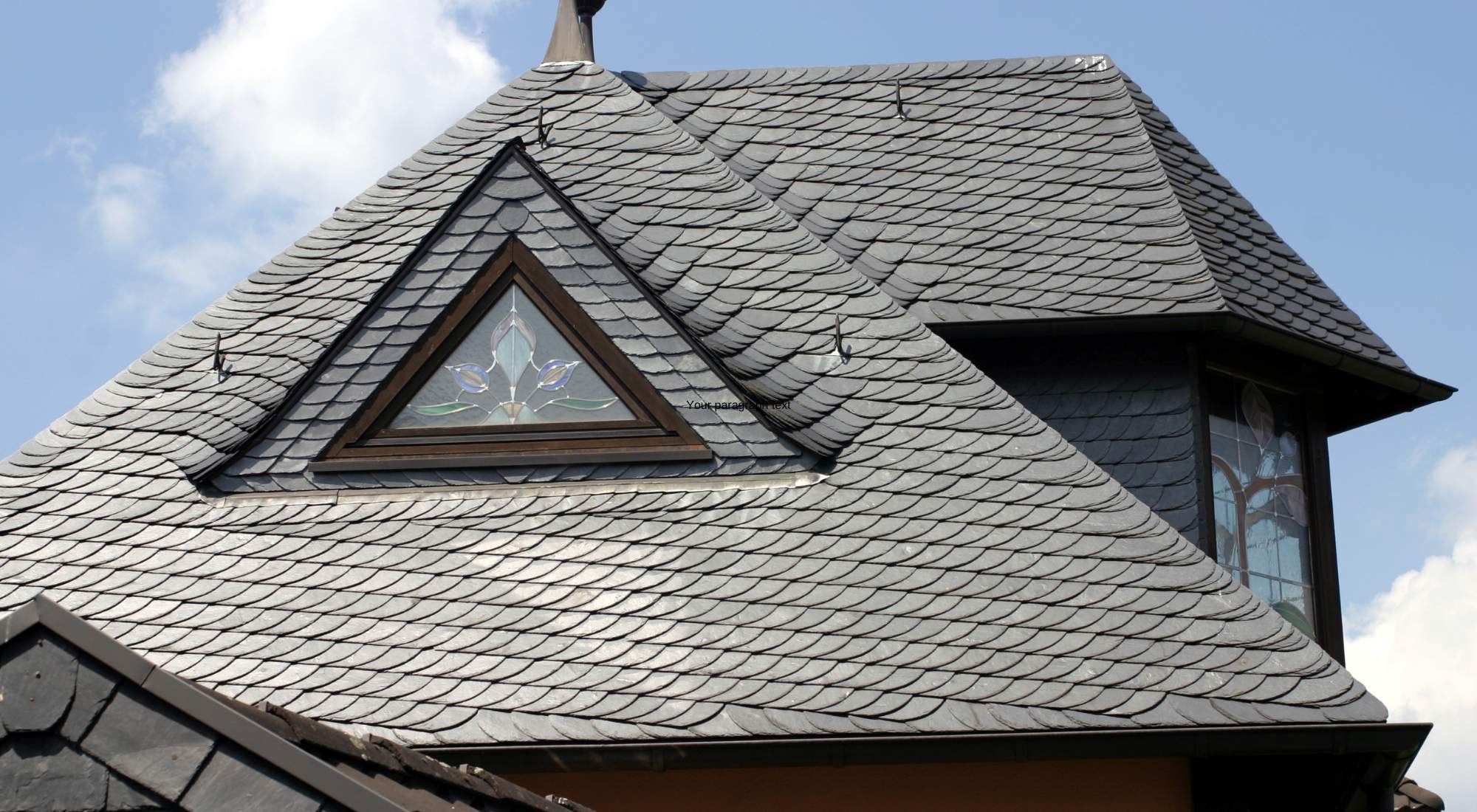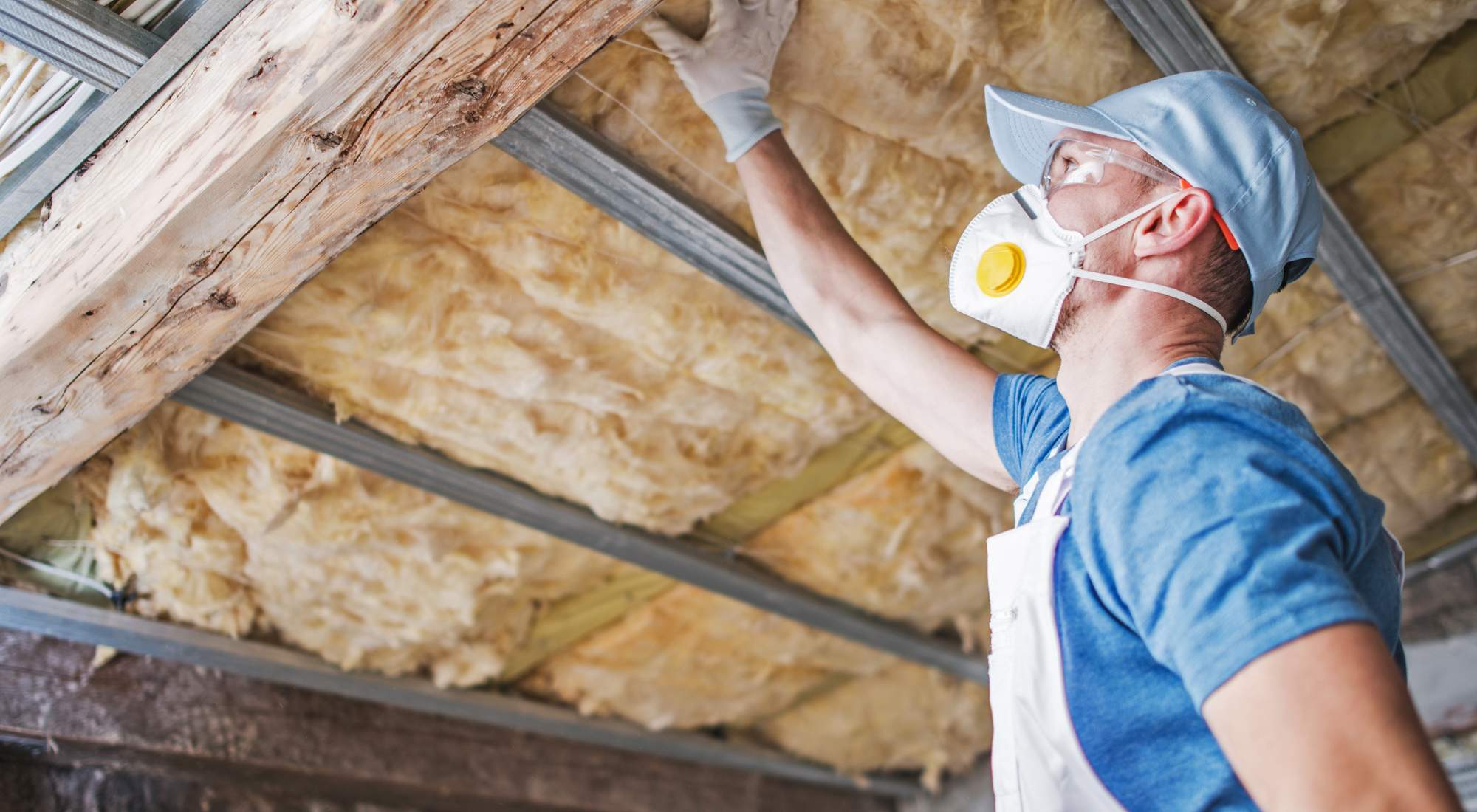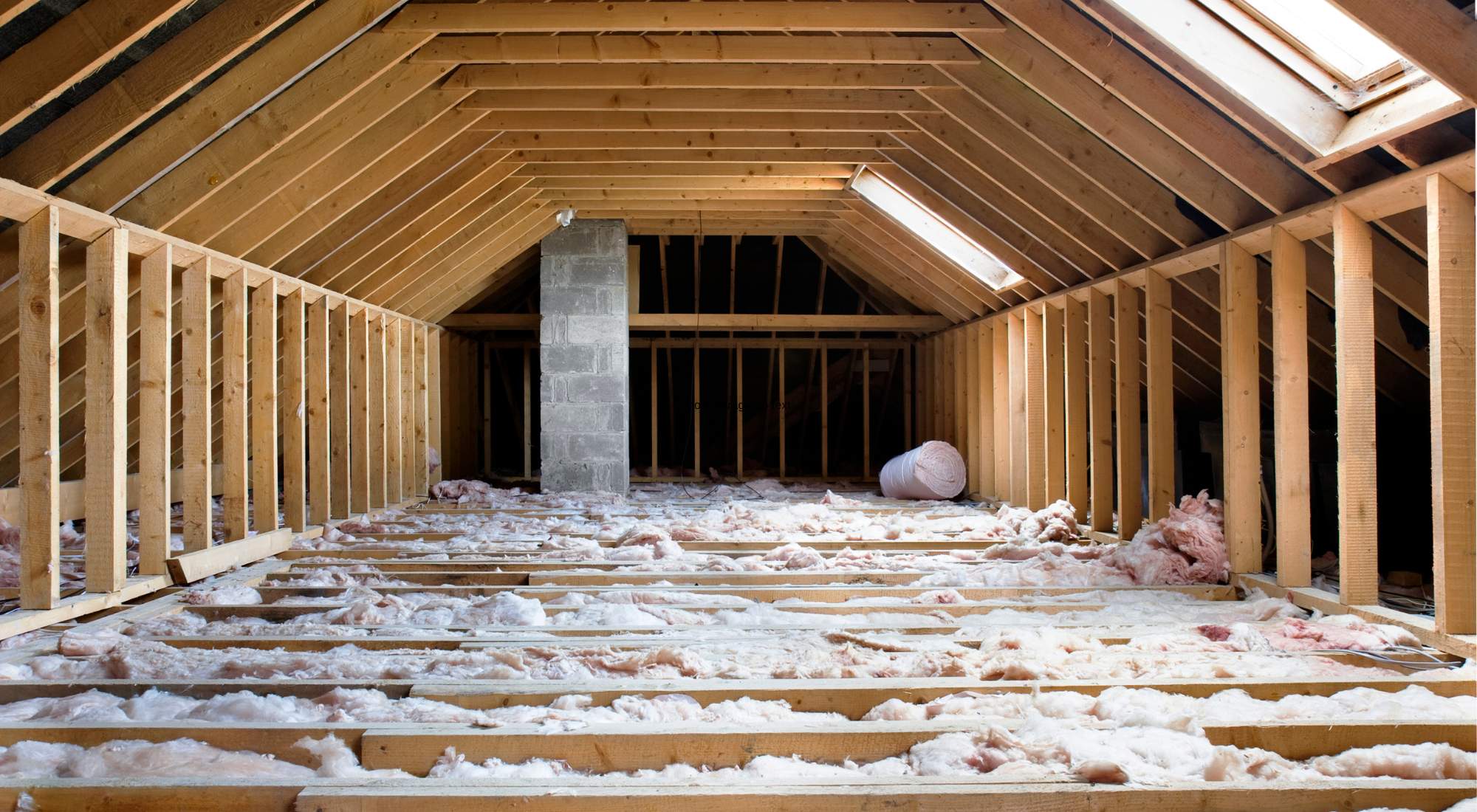Believe it or not, the attic in your house is more than just a storage unit for holiday decorations, Grandma’s old rocking chair, and your kids’ outgrown toys — the attic space has a functional purpose in the design of your home.
Aside from collecting years of junk, your attic can help circulate the air conditioning and heat inside your home and increase energy efficiency. Having space between your ceilings and the roof allows free movement of the air to help regulate temperatures — and your thermostat.
However, for your attic to function optimally, you need to be sure the proper materials were utilized in the construction of your home. The materials can directly affect the performance of this important space.
Read further to understand why the attic in your home exists and what you can do to maximize the efficiency of your home.
Table of Contents
- Why Your Attic Plays a Key Role in Home Energy Efficiency
- How To Make Your Attic More Energy Efficient: 15 Tips From the Experts
- Trust Pure Environmental To Help Make Your Attic More Energy Efficient

Why Your Attic Plays a Key Role in Home Energy Efficiency
Attics serve as a critical buffer between the roof and the rest of the house, playing a significant role in temperature regulation and moisture control.
A well-maintained attic can contribute to lower energy bills, improved indoor air quality, and extended roof life.
On the other hand, a neglected attic can lead to a plethora of problems, such as heating and cooling loss, moisture damage, or structural issues.
Signs Your Attic Is Wasting Energy
As homes are constructed or remodeled, energy efficiency is a common goal for project completion.
But how do you know if energy is wasting away through your attic and roof?
Some signs that you may see if energy efficiency is lacking in your home include:
- Uneven temperatures throughout the space
- High or increasing energy bills
- Ice dams in the winter months
- Pest infestations
- Damp or wet insulation
- Aged insulation
At Pure Environmental, our premier team of experts specializes in fire, water, and smoke damage restoration, odor removal, home restoration, remodeling, energy-efficiency projects, and crawl space and attic cleanup in the Portland and Tacoma areas.
If any of these signs have been present or you have noted new issues in your home, contact Pure Environmental for our recommendations today.
How To Make Your Attic More Energy Efficient: 15 Tips From the Experts
#1: Insulate Your Attic
Every home is unique, especially when it comes to insulation needs. This is particularly true for older homes, which often have distinct architectural features and insulation challenges. Understanding the differences is key to choosing the right insulation.
For example:
- Loose-fill cellulose may be the best choice for attics with irregular joist spacing.
- Spray foam insulation is helpful in sealing air leaks and gaps that may be found in the attics of older homes.
- Fiberglass batts are a practical option for homes with limited attic space as they can be cut to fit between the joists and studs.
Choosing the correct insulation for your specific type of home helps regulate temperature and reduce energy waste.

#2: Seal Air Leaks
Air leaks can occur almost anywhere, but especially where there is a change in material, such as:
- Around chimney and plumbing vents
- Along the top plates of interior and exterior walls
- Around electrical wires and outlet boxes
- At dropped soffits and ceiling height changes
- Around recessed light fixtures
Closing the gaps where air creeps in with weather stripping or sealing with caulking can block not only cold air but moisture, too — along with increasing the energy efficiency of your home.
#3: Install a Radiant Barrier
Radiant barriers are simply rolls of foil that are attached to the underside of attic rafters so the entire ceiling is covered, leaving gaps at the floor and ridges of the ceiling for circulation.
The purpose of a radiant barrier is to reflect radiant energy back out of the roof during summer months or in warm climates to keep the house cooler.
Radiant barriers are also effective in cold weather because they reflect interior heat back into the living space. This minimizes heat loss through the roof and walls, enhancing insulation and keeping the home warmer during the winter months.
#4: Improve Attic Ventilation
Attic ventilation involves the circulation of outdoor air through an attic space to control temperature and moisture levels.
This process keeps the attic cool during hot months and prevents condensation during colder times — ensuring a comfortable environment for the living spaces below.
What do you need to improve ventilation in the attic and prevent moisture or heat accumulation?
- Dome vent
- Low-profile ventilation system installed near the ridge of a roof
- Allows hot air and moisture to escape the attic
- Ensure proper airflow within your attic for moisture control, temperature regulation, and roof lifespan
- Soffit vent
- Roof ventilation devices installed underneath the eaves of a roof that extend past the warm wall line
- Allow fresh air to enter an attic creating airflow
- Reduce energy consumption and prolong the lifespan of the roof, air-conditioning unit, and structural components of your home
By keeping moisture levels in check, homeowners can save on potential repair costs associated with mold remediation, heat accumulation, or structural damages.
#5: Upgrade To Energy-Efficient Roofing Materials
Generally, the most energy-efficient roofing materials are metal, tile, and asphalt.
Light roof colors tend to reflect more sunlight and heat than darker colors. Popular light colors used for energy-efficient homes are white, light gray, and light brown.
However, with more and more technology advancements, you do not have to decide between color and energy efficiency as modern shingles, like cool roof shingles, can still reflect heat despite a darker color.
For more help navigating the variety of energy-efficient roofing materials available, speak to a local professional. The experts can tell you what is most popular in your area and help you understand the advantages of upgrading to a more energy-efficient roof.
#6: Use an Attic Fan
Active ventilation systems use powered fans to forcefully move air through the attic, typically with fans. These can be particularly useful in hot climates or attics with limited natural airflow.
If you live in a cooler or breezy climate, an attic fan may not be necessary as your home can be ventilated easily by just opening windows.
#7: Seal and Insulate Ductwork
Moisture in the attic and ductwork can lead to mold growth, wood rot, compromised insulation, and even illness if ductwork is compromised.
Common causes include:
- Condensation due to temperature differentials
- Improperly vented bathroom or kitchen exhaust fans
- Poor ventilation
- Roof leaks
It is important to address these issues promptly to avoid chronic or progressive problems in the future and ensure they are properly sealed and insulated, especially if your HVAC ducts run through the attic.
#8: Install Energy-Efficient Windows or Skylights
Energy-efficient windows and skylights have advanced features, such as low-emissivity (Low-E) coatings to block UV rays, multiple panes filled with insulating gas, and durable frames that minimize heat transfer.
One of the key selling points for energy-efficient windows is their ability to reduce energy bills. But how much money do they really save?
It depends on what type of windows you are replacing in your home and what type of energy-efficient windows you install.
Replacing single-pane windows with energy-efficient windows can reduce your heating and cooling bills by 21-30%, so they are often worth the investment.
#9: Keep Attic Doors and Hatches Insulated
Unsealed door frames or uninsulated doors can contribute to energy loss and inefficiency.
- If you are installing a new door, select an insulated attic hatch or door to prevent heating and cooling losses.
- If you have old doors in your home, utilize weather stripping and insulation materials to protect against airflow around the door.
#10: Reduce Excess Moisture
Excess humidity in the attic can affect insulation performance and lead to mold or structural damage. Any dampness or leaks can cause catastrophic issues, and steps need to be taken to mitigate risk.
Repairing roof leaks, improving ventilation, properly routing exhaust fans, and repairing air leaks that allow warm or moist air from other living spaces to enter the attic will help to reduce overall moisture concerns.
#11: Choose the Right Insulation R-Value for Your Climate
Insulation is a crucial component of any building. It helps to regulate temperature, reduce energy consumption, and improve overall comfort. The insulation R-value, in particular, is a critical factor in determining the effectiveness of insulation.
R-value measures thermal resistance, which is how well insulation can resist the flow of heat. Understanding and calculating the R-value is crucial for choosing the right insulation for your specific climate and ensuring optimal performance in your home.
Factors to consider include the climate in your area, the type of home, and the specific areas where insulation is needed. As a rule of thumb, homes in colder climates may require insulation with a higher R-value to keep indoor temperatures warm and comfortable.

#12: Minimize Storage
As it is easy to allow attic spaces to become a vault for forgotten belongings, overstuffing the space can block vents, reduce overall airflow, and reduce energy efficiency.
Attempt to keep clutter under control to benefit your energy bill throughout the year.
#13: Regularly Maintain Your Attic
It’s a good idea to regularly maintain your attic space, but other than keeping it tidy, what else should you do?
- Ensure there is adequate ventilation.
- Seal air leaks and cracks.
- Inspect for evidence of critters or pests.
- Maintain adequate insulation.
- Make sure it stays dry without any excessive moisture buildup or wet areas, especially around vents, windows, ceilings, or rooflines.
It’s important to visually inspect all parts of your attic on a regular basis so any issues can be caught and addressed early. One of the best things homeowners can do to ensure the health of their attic is to schedule an annual inspection to confirm everything is in proper working order.
#14: Consider Solar Panels
The benefits of installing rooftop solar panels may make it sound like it’s an easy decision, but the reality is not every home is always right for solar.
Your roof should be in good condition before installing solar panels. If it’s old and in poor shape, it may need to be replaced before panels can be mounted.
Additionally, your roof should receive a lot of sun to make the most of a rooftop system. Consider how much sun — and shade — the roof receives and if any trees will need to be removed.
Solar panels perform best when facing south, so keep this in mind as you think about where the panels will be mounted.
As solar panels can add considerably to the energy efficiency of your home, there are still many factors to ponder before jumping into this decision.
#15: Conduct a Home Energy Audit
You are confident that your home is somewhat energy-efficient, but there is always room for improvement, right?
What steps can you take to audit your home’s energy efficiency?
- Locate and seal air leaks.
- Check insulation levels.
- Ensure appropriate ventilation is in place and functioning properly.
- Inspect heating and cooling equipment.
- Replace inefficient lighting fixtures and bulbs with energy-saving products.
- Choose or replace appliances with energy-efficient models.
Scheduling a professional home energy audit is a great step to improve the comfort and health of your home.
During an energy audit, the professional will help you identify:
- Where your home can become more energy-efficient, particularly related to attic concerns
- Energy-related trouble spots
- Upgrades and insight into how to enhance both your energy savings and overall comfort and health
Ready for your home and attic to be more efficient?
Trust Pure Environmental To Help Make Your Attic More Energy Efficient
Even if your attic is not lived in like the other rooms in your home, it is still important to make sure you are regularly maintaining it. Problems in the attic can lead to other issues, so it is important to monitor it and make sure it stays clean.
Our technicians are skilled at finding the root cause of any attic problems you’re experiencing and creating solutions to get your space back to optimal condition and ensure a healthy environment in your home with our 100% green technologies and products.
Call Pure Environmental today and let us assist you with your attic concerns.
Recent posts
- Maximize Comfort & Savings: Make Your Attic More Energy Efficient Today
- How To Prevent Water in Your Crawl Space: Proven Strategies To Prevent Water Damage
- Fresh and Clean: How To Disinfect the Air in Your Home Naturally
- Pros and Cons of Heat Treatment for Bed Bugs: Things To Consider When Reviewing Your Options for Remediation
- How To Get Rid of Pet Odor in Your House
Recent Posts
- Maximize Comfort & Savings: Make Your Attic More Energy Efficient Today
- How To Prevent Water in Your Crawl Space: Proven Strategies To Prevent Water Damage
- Fresh and Clean: How To Disinfect the Air in Your Home Naturally
- Pros and Cons of Heat Treatment for Bed Bugs: Things To Consider When Reviewing Your Options for Remediation
- How To Get Rid of Pet Odor in Your House
